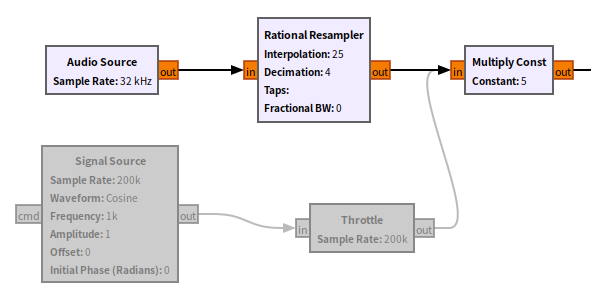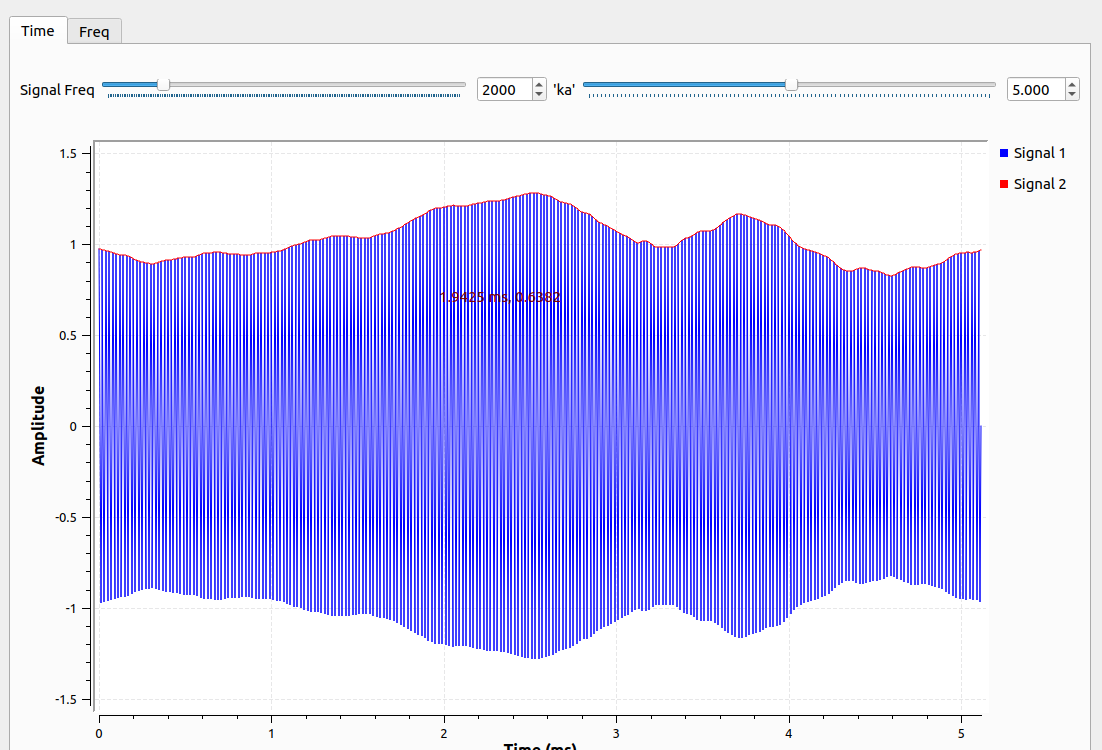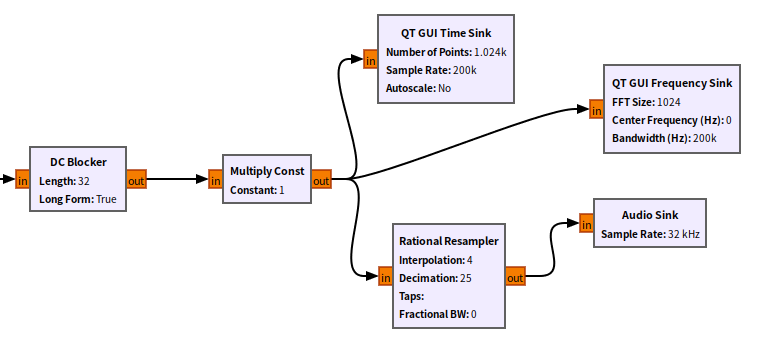Voice Testing
Previously, the simulation was for a single frequency audio signal. Now, we will use a voice signal for testing.
Modulation
Disable the Signal Source and Throttle (using Disable, shortcut key is 'd'), and add an Audio Source and a Rational Resampler. Additionally, adjust the range of ka to be larger, as shown in the figure below:

The parameters for the Audio Source and Rational Resampler can be adjusted as follows:
- Audio Source: sample rate = 32e3
- Rational Resampler:
- Interpolation: 25
- Decimation: 4
Additionally, the maximum value of ka's range can go up to 10 or higher, with a Default value set to 5. During the simulation, speak into the microphone and observe whether the waveform changes significantly. If not, dynamically increase the value of ka. The figure below is a screenshot at a certain moment.

Demodulation
For the output, in addition to feeding it into the oscilloscope, add a Rational Resampler and an Audio Sink as shown in the figure below:

The parameters for the Audio Sink and Rational Resampler are adjusted as follows:
- Audio Source: sample rate = 32e3
- Rational Resampler:
- Interpolation: 4
- Decimation: 25
Test with the recorded AM signal (if recording is not possible, you can also use this file for testing).
If the simulation feels too slow, consider disabling the Time Sink and Frequency Sink.
Exercise 5
- Complete the voice testing simulation.
- Decode the voice from this file.
- Try adjusting the LPF (Low-Pass Filter)'s Cutoff Freq and Transition Width to see their effects on the signal's demodulation.
